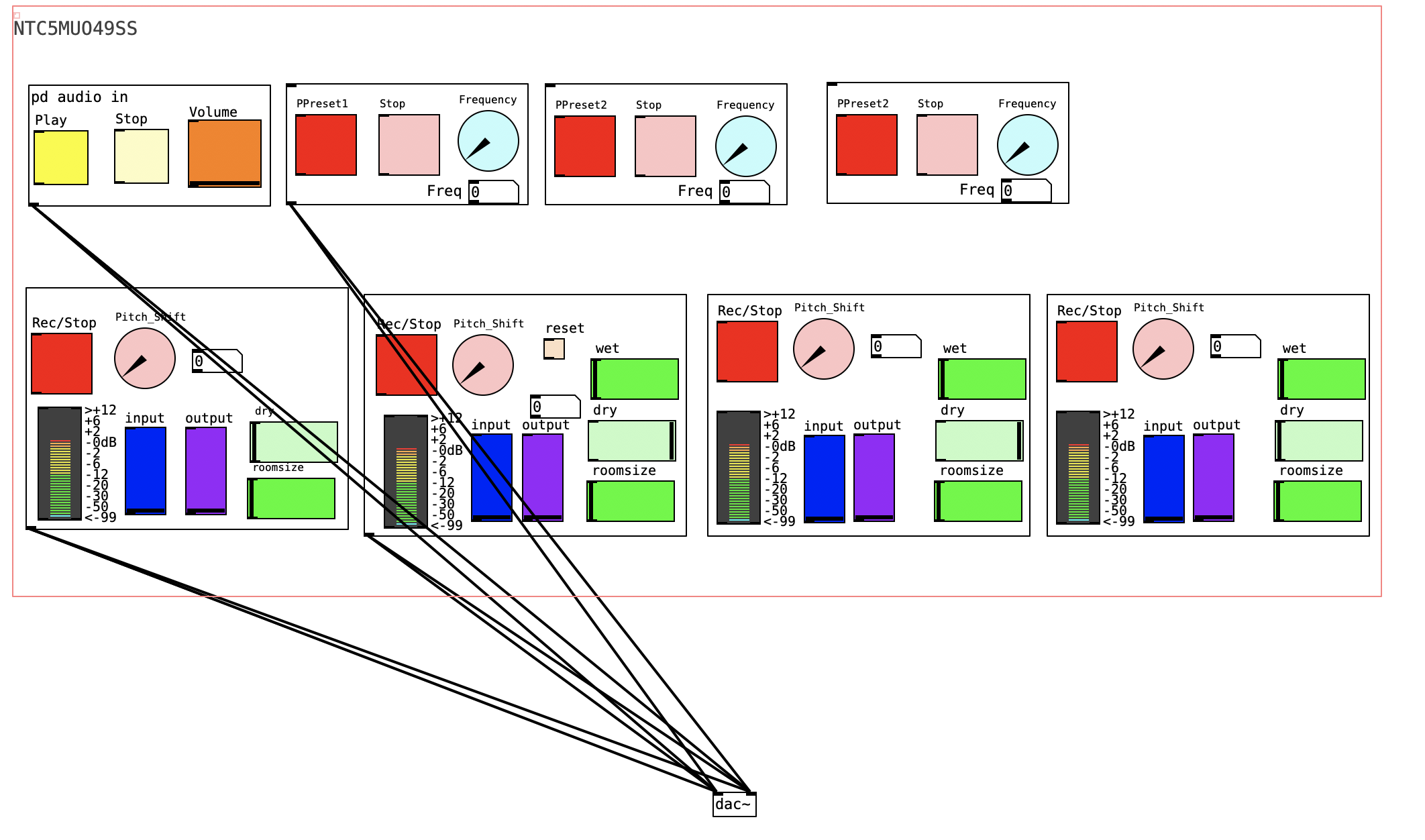@Naomi You are moving on fast.
You can include [dac~] within the abstraction (what I think you have called "subpatch"...... but maybe they are subpatches.... hard to tell with a screenshot) and each and every one of them will send straight to the same [dac~] directly.
Anyway [dac~] is the same as [dac~ 1 2] and will always send to left and right.
If you have a soundcard with more outs then try eg [dac~ 1 2 3 4 5 6 7 8] and you will get an inlet for each channel.
It looks like you have changed the reverb patch between your screenshots... and done exactly that.
As you are now into abstractions you should know that you can also use arguments for the abstractions....... making them all different even though only one exists....... https://forum.pdpatchrepo.info/topic/9774/pure-data-noob/4
Scroll down below the screenshot and read the text about dollars...$
You can reload different audio files into the same players...... so there is no need to delete and reinstate them.......... use the [openpanel] object which will give you an operating system file browser.
Or you could use an argument for your [track] abstraction to load a particular file.
Or you could use a radio button in the abstraction to load a particular file.
If you need help then zip your whole patch up into a zip file and upload it (the up arrow button above your post----- Not the "insert code here").
Ps we call compiled binaries "externals" in Pd........ they are the objects for which you can only get "help" and cannot "open" them.
And we call objects like [pd mypatch] sub-patches....... they are really just a window within a patch window.
In fact maybe that is what you have done.
But abstractions are much more powerful than sub-patches and have the same GOP possibilities..... and so they are really worth learning about. When you make changes to an abstraction it will change every copy as you save it....... no more copy/pasting across subpatches.
David.






